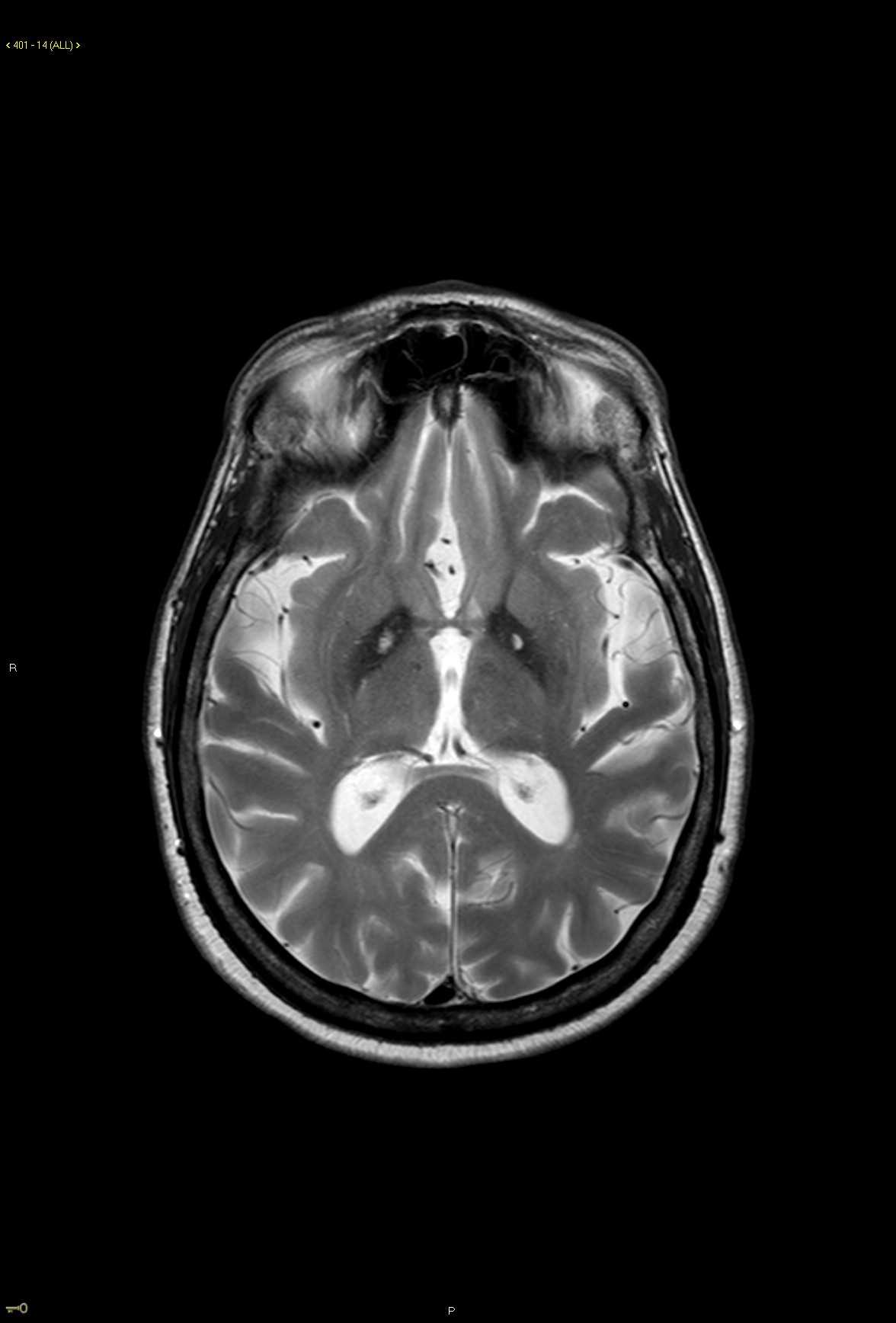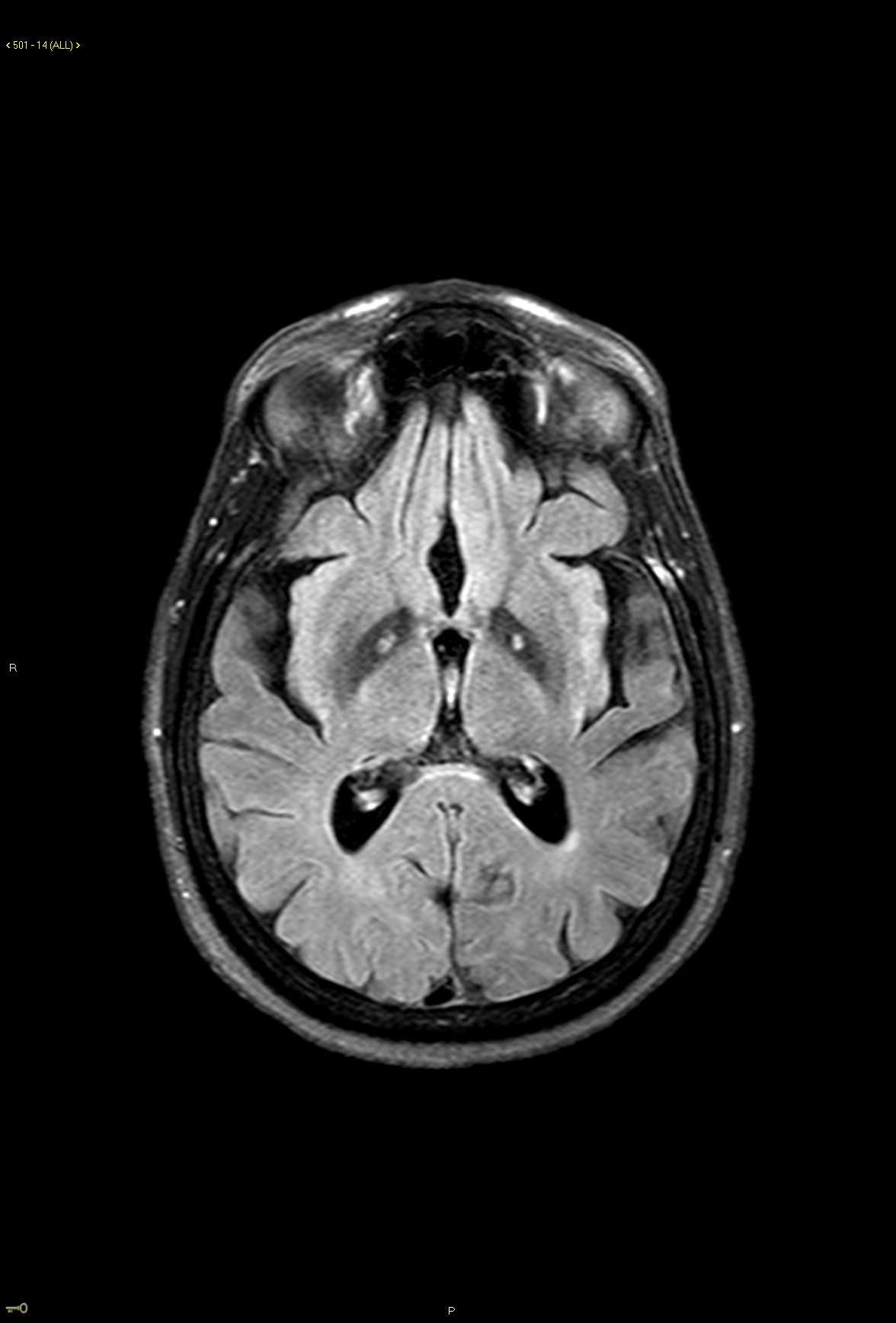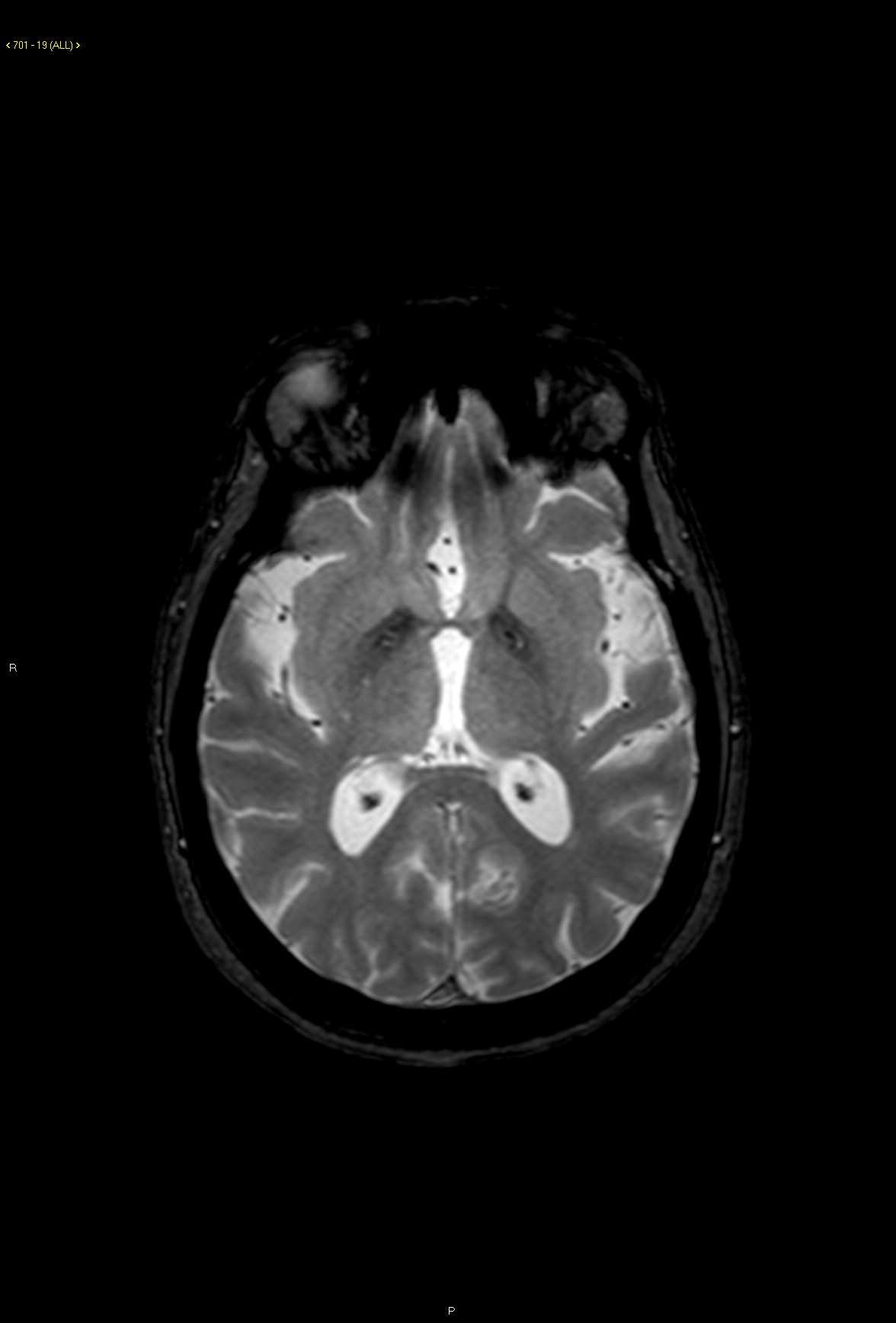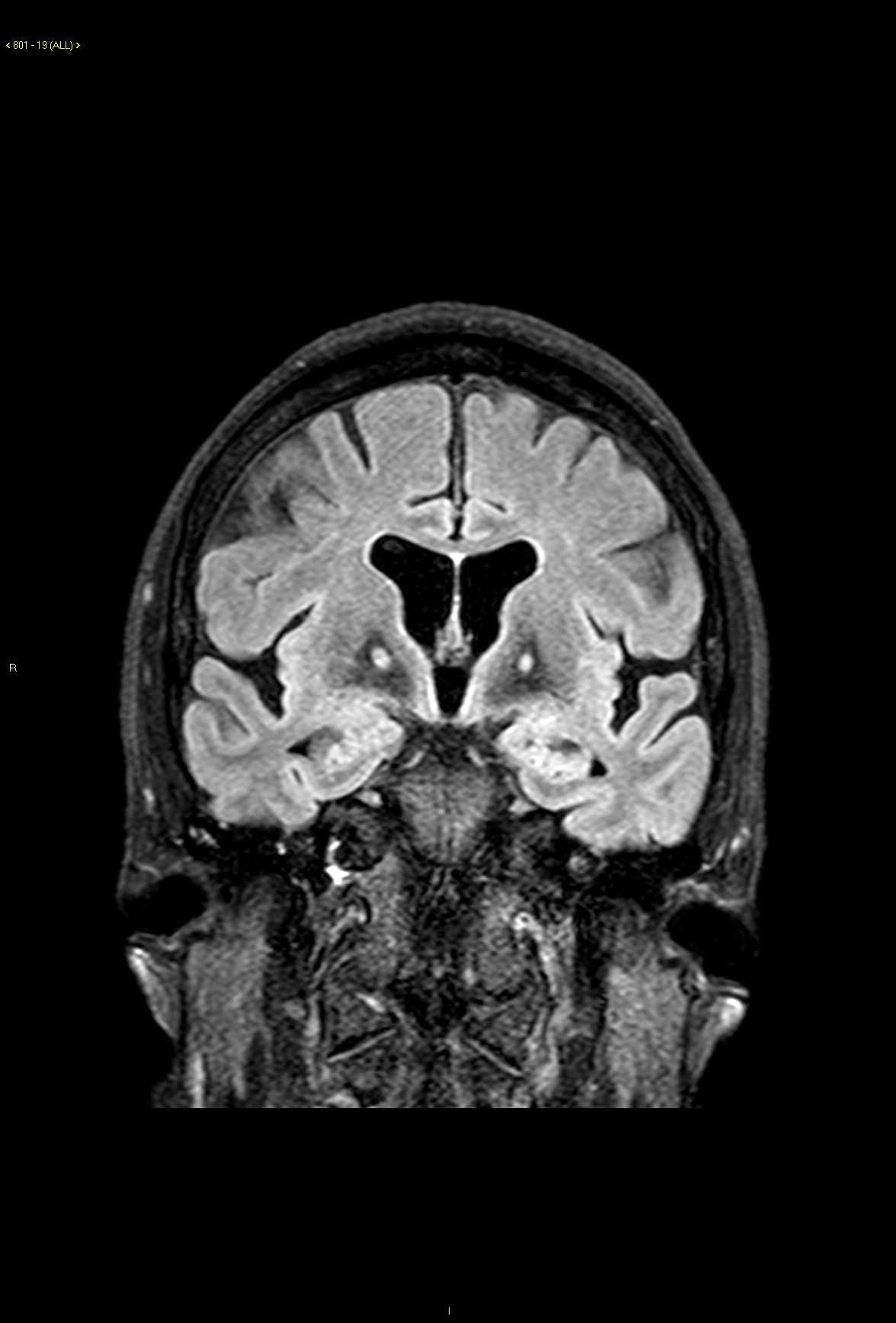
- 2
- ,
- 2
- 9
- 7
To Quiz Yourself: Select OFF by clicking the button to hide the diagnosis & additional resources under the case.
Quick Browser: Select ON by clicking the button to hide the additional resources for faster case review.
CASE NUMBER
317
Diagnosis
Hallervorden-Spatz Syndrome
Note
12-year-old male with history of dystonia, dysarthria, and rigidity. The images demonstrate well-circumscribed regions of T2 hyperintense, FLAIR hyperintense, T1 hypointense signal and susceptibility within the medial globus pallidus region bilaterally. There is diffuse T2 hypointensity. Imaging findings are compatible with Hallervorden-Spatz syndrome. Hallervorden-Spatz represents neurodegeneration with brain iron accumulation. There are numerous causes. The most common cause is pantothenate kinase-associated neurodegeneration. The hyperintense region of the medial palladi predate the surrounding hypointensity. The overall size of the medial T2 hyperintense regions decreases as the disease progresses. Palladal hypointensity increases with disease progression. Atrophy is demonstrated in advanced cases.
THIS IS CASE
317
OF
365












